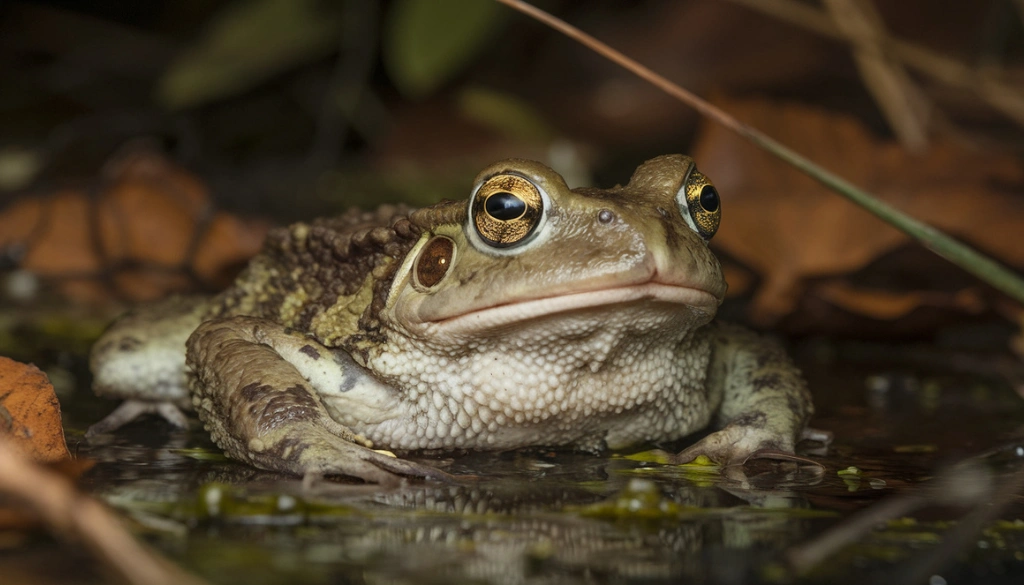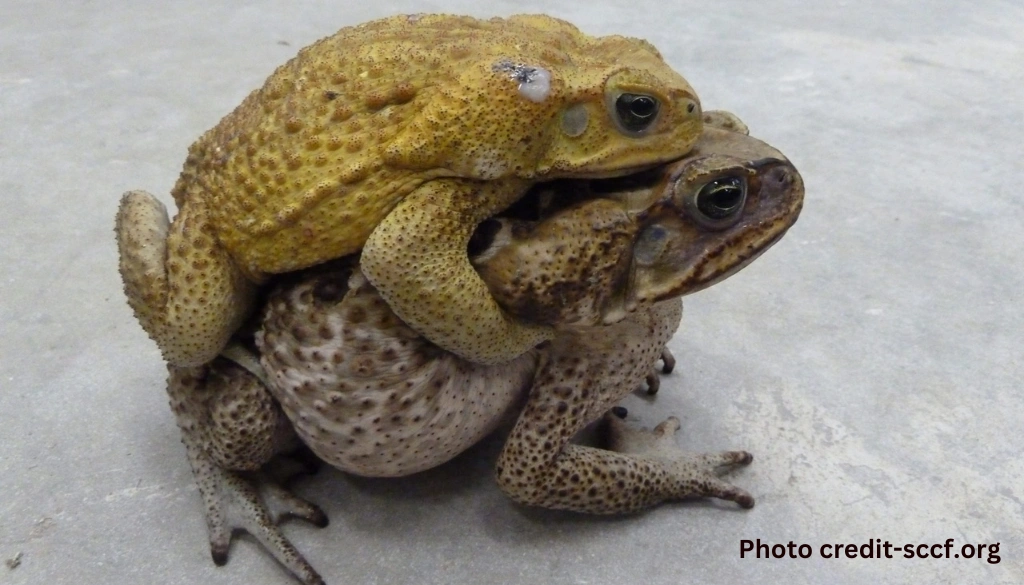
Cane Toads: Fascinating Facts About Their Food and Life Cycle
Cane toads are interesting amphibians that live in wetlands and freshwater areas. They have a unique life cycle that starts as tiny tadpoles and transforms into adult toads. These toads are known for their wide diet, mainly eating insects like ants, beetles, and crickets. They can even consume small mammals and birds if they fit in their mouths!
Understanding the cane toad’s habitat, food, and life cycle is significant. They play a role in their ecosystem but can also be invasive. This means they can harm local wildlife. Join us as we explore the amazing world of cane toads and learn how they survive and adapt!
Cane Toad Habitat and Distribution
The Cane Toad thrives in diverse habitats, particularly in wetlands, freshwater areas, and tropical regions. Originally from South America, they have successfully spread to Australia and North America because of their exceptional adaptability. These amphibians even flourish in urban settings, scavenging for food amidst human activities.
As omnivores, Cane Toads consume a wide variety of food, including insects, small mammals, and pet food. This diverse diet not only ensures their survival but also accelerates their rapid population growth, reinforcing their status as an invasive species.
During reproduction, females lay between 8,000 and 25,000 eggs in long, jelly-like strings. These eggs hatch into tadpoles that primarily feed on algae. Within 12 to 60 days, they undergo transformation into adult toads. But, their swift expansion threatens local ecosystems by outcompeting native species for critical resources.
| Feature | Description |
|---|---|
| Habitat | Wetlands, urban areas, freshwater |
| Diet | Insects, small mammals, carrion |
| Reproduction | 8,000-25,000 eggs in jelly strings |
Understanding the environmental impact of Cane Toads is critical for conservation efforts. Their presence can disrupt the ecological balance, leading to habitat destruction for native species. By studying their population dynamics, we can devise strategies to manage their spread and protect vulnerable ecosystems.
Diet and Feeding Habits of Cane Toads
Cane toads are interesting omnivores with a diverse diet critical for their survival. They consume a wide array of food, including insects, small mammals, and even other amphibians. This dietary adaptability allows them to thrive in different habitats, from wetlands to freshwater environments.
As tadpoles, cane toads primarily eat algae and plant matter. After transformation, their diet expands remarkably. Adult cane toads are opportunistic feeders, consuming almost anything that fits in their mouths, including carrion and pet food. Their feeding habits can disrupt local ecosystems, particularly since they are an invasive species in many regions, negatively impacting native wildlife and habitats.
Analyzing their predator-prey relationships reveals their ecological role. Cane toads have few natural predators because of their toxic skin, which deters many animals. But, their presence can harm populations of native wildlife, leading to declines in native frogs and other small creatures.
| Diet Type | Examples |
|---|---|
| Insects | Beetles, ants, crickets |
| Small Animals | Mice, lizards, other toads |
Understanding the feeding habits of cane toads highlights their adaptability and emphasizes the urgent need for conservation efforts to manage their populations and protect native wildlife.
Reproductive Behavior and Breeding Patterns

The Cane Toad exhibits interesting reproductive behavior and distinct breeding patterns. These adaptable amphibians thrive in different habitats, particularly wetlands and freshwater environments. During the mating season, which coincides with warmer temperatures, males emit vocal calls to attract females. This mating ritual is critical for successful reproduction.
After mating, a female cane toad can lay between 8,000 and 30,000 eggs in shallow water. These eggs hatch within 1 to 3 days, transforming into tiny tadpoles. As they develop, tadpoles undergo transformation, maturing into adult toads in just a few weeks. This rapid life cycle allows cane toads to quickly adapt to their environments, contributing to their status as an invasive species in many regions.
Their diet plays an similarly critical role. Cane toads primarily consume insects, making them significant players in the local food chain. But, their voracious appetite can disrupt ecosystems, leading to declines in native species. Effective conservation strategies are necessary to manage cane toad populations and reduce their environmental impact.
Life Cycle Stages of Cane Toads
The life cycle of cane toads consists of four distinct stages: eggs, tadpoles, transformation, and adult toads. This interesting journey begins when a female cane toad lays between 8,000 and 25,000 eggs in freshwater habitats like wetlands. These eggs form long, gelatinous strands that provide a safe environment for the developing tadpoles.
Within a few days, the eggs hatch into tadpoles. During this aquatic phase, they primarily feed on algae and organic matter. As they grow, they undergo transformation, a remarkable transformation where they develop legs, absorb their tails, and become juvenile toads. This metamorphic stage can last from several weeks to months, depending on environmental factors such as temperature and moisture.
Once fully developed, the adult cane toads emerge, ready to reproduce and fulfill their ecological role. These toads are opportunistic feeders, consuming a varied diet that includes insects, small mammals, and even other amphibians. But, as an invasive species, cane toads pose a significant threat to local wildlife and ecosystems, leading to habitat destruction and serious conservation challenges.
| Life Cycle Stage | Description |
|---|---|
| Eggs | Gelatinous strands laid in water, containing 8,000-25,000 eggs. |
| Tadpoles | Aquatic stage feeding on algae; develops into juvenile. |
| Transformation | Transformation from tadpole to juvenile toad; legs grow, tail absorbed. |
| Adult Toad | Fully developed; capable of reproduction and foraging. |
Environmental Impact and Invasive Species Concerns
The cane toad is a interesting amphibian but poses a serious threat as an invasive species. Originally from South and Central America, these toads flourish in warm wetlands and freshwater habitats. Their broad diet, which includes insects, small mammals, and even other toads, makes them powerful predators. This voracious appetite leads to declines in native species and disrupts local ecosystems.
Cane toads undergo transformation from tadpoles to adults, with females capable of laying thousands of eggs. The hatching tadpoles primarily feed on algae, resulting in rapid population growth that can overwhelm local environments. As cane toads multiply, they threaten biodiversity and upset predator-prey relationships.
To reduce their impact, we must focus on habitat restoration and wildlife conservation. Protecting native species and managing cane toad populations are critical for maintaining ecosystem balance. Also, tackling climate change and habitat degradation is necessary for the future of our wildlife.
| Cane Toad Impact | Effect on Ecosystem |
|---|---|
| Predation on native species | Decline in biodiversity |
| Rapid reproduction | Population explosion |
Adaptations and Survival Strategies in Ecosystems
Cane toads are interesting amphibians famous for their unique adaptations and effective survival strategies across diverse ecosystems. Originally from South and Central America, they thrive in habitats like wetlands, rainforests, and coastal regions. Their remarkable ability to withstand fluctuating temperatures and retain moisture allows them to survive in challenging environments.
As omnivores, cane toads have a varied diet that includes insects, small mammals, and plants. Their eating habits evolve as they grow; tadpoles primarily consume algae and vegetation, while adult toads become aggressive predators, boosting their reproductive success. Female cane toads can lay thousands of eggs at once, remarkably increasing the survival chances of their young.
But, cane toads are considered an invasive species in places like Australia, where they disrupt local ecosystems. Their toxic secretions repel most predators, allowing their populations to expand unchecked and threatening native species. Effective conservation strategies are critical to lessen their ecological impact and protect biodiversity.
| Adaptation/Strategy | Description |
|---|---|
| Moisture Retention | Cane toads survive in dry conditions by retaining moisture in their skin. |
| Toxicity | Their skin secretes toxins that deter predators, enhancing survival rates. |
| Rapid Reproduction | Females can lay thousands of eggs, ensuring the species’ continuity. |
Summing up
Cane toads are interesting creatures with unique adaptations for survival. Their diet mainly includes insects like ants and beetles, but they can eat almost anything. This flexibility helps them thrive in different habitats. Their life cycle, from tadpole to adult, shows how they adapt to their environment. But, their poisonous nature can impact local ecosystems. Understanding cane toads helps us appreciate their role in nature and the challenges they face. We must consider conservation efforts to protect ecosystems affected by invasive species like the cane toad.
